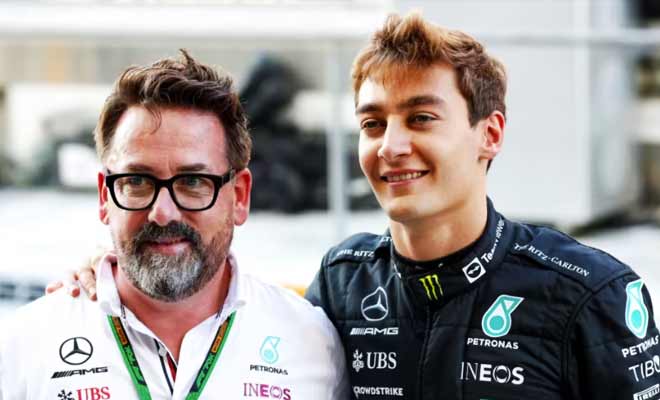Gwen Lagrue at Mercedes undertakes the vital task of guiding young talents to Formula 1 amidst limited seat availability. His strategy involves foreseeing the future and ensuring diverse opportunities for drivers.
Lagrue at Mercedes faces a challenging task as the head of the young driver program: finding Formula 1 seats for Mercedes’ talents is tough with only 20 available spots.
Mick Schumacher’s case highlights this issue: with no F1 seat available, even at Williams, he had to shift to a WEC program with Alpine.
How does Lagrue manage when a driver excels in F3 and F2 but no F1 seat is available? He addressed this difficult question.
“First, when we sign a driver, we feel the responsibility to provide them with a career. It’s a life project for these youngsters, and I feel the responsibility to give everything to help them perform, guide them, and reach the top. This means anticipating the market in two, three, four years. ‘If I sign this driver, will there be a Formula 1 seat available in four years? Do I have a real chance to bring them into Formula 1?’ These are the questions we ask.”
“Sometimes, a fantastic driver wins in F2 but has no F1 opportunity. We always try to anticipate this and have options: reserve driver, test driver, simulator. But for a young driver, having an opportunity in another series is important. You need to keep several options open.”
“If you’re sure you have immense talent, you’ll know early enough to anticipate and ensure they’re in F1 in two years. With George, for example, when we signed him in 2016, he was in Formula 3; and when he won F3, the goal was to move to Formula 2. From there, I knew I had to find a Formula 1 opportunity. What will the situation be in two years? If George wins F2, where can I place him in Formula 1? We anticipated all of this.”
Young drivers sometimes find themselves sidelined, without any official racing program. Isn’t that the worst situation for a 20-year-old?
Mercedes’ Strategy for Young Driver Development F1
“Well, first, if we have an exceptional talent, we always have the option to have them drive in F1. I don’t think in the last 15 years we’ve missed anyone exceptional. All the exceptional drivers are actually in Formula 1.”
“If you find yourself in a situation where you have to wait, you need to find them track time because it’s part of their preparation. You have to maintain training, the racing spirit, everything, to find a Formula 1 solution. But I think it can’t last more than a year.”
Oscar Piastri spent a year not engaged in a series last year with Alpine… but the French team had him drive a two-year-old car. Was this essential according to Lagrue?
“Yes, absolutely. Otherwise, you lose too much by waiting.”
Finally, Lagrue faces another significant challenge: limited private F1 testing. Now, a young driver has only a day and a half of winter testing before making the big jump… rookies like Logan Sargeant struggle with this regularly.
“It’s tougher because there’s less testing and track time. But on the other hand, we prepare young drivers better than 15 years ago. They spend a lot of time in factories, interacting with a team of engineers, doing a lot of simulators, so they know all the procedures, the teams, they’re used to having technical discussions, etc. Yes, track time is less important than before, making things a bit harder when driving. But we prepare them much better than a few years ago.”
Young Driver Development F1. Young Driver Development F1
- Read More>ASTON MARTIN F1’S EVOLUTION UNDER TOM MCCULLOUGH
- Following us on Facebook and Twitter.
